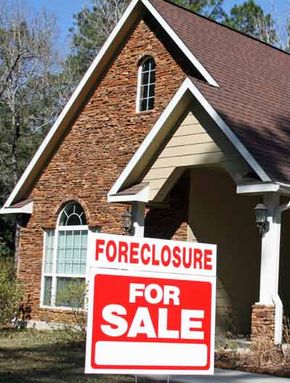If owning a home is part of the American Dream, then losing a home is fast becoming the new American Nightmare. Foreclosure is the process by which lenders have the legal right to recover their loan by repossessing the property that the loan was for and reselling it to recoup their loss. The process begins when borrowers miss their loan or mortgage payment.
The number of foreclosures has reached a record high in the United States; the Mortgage Bankers Association (MBA) reported in 2008 that more than 900,000 households are in foreclosure. That's up 71 percent from last year, and the figure represents more than 2 percent of all mortgages. That's the highest foreclosure rate in the 36 years that the MBA has been tracking delinquent mortgages [source: Christie].
Advertisement
These numbers might make you nervous about keeping your own home, or perhaps you're too scared to buy at all in this kind of market. Maybe you think you're invincible, and that the foreclosure crisis was caused by people living beyond their means in homes they can't afford. Whichever camp you fall into, you're probably wondering why all these people can't pay their mortgages.
When the foreclosure rate started rising, we heard a lot of blame attributed to subprime mortgages. Subprime mortgages often come with low introductory interest rates that reset at incredibly high values a few years later. Further complicating the matter, people with low credit scores are the main recipients of subprime mortgages, which means they may not have the funds to make a higher payment when the rates adjust.
It's true that subprime mortgages accounted for 42 percent of homes on which foreclosure started during the last quarter of 2007 [source: Christie]. But foreclosure rates are rising for everyone. In 2007, both subprime and prime mortgages doubled in foreclosures compared to the previous year, with subprime foreclosures rising from 2.7 percent to 5.29 percent, and prime rate foreclosures jumping from 0.41 percent to 1.06 percent [source: Christie]. So something may be going on besides subprime mortgage rates resetting at sky-high rates. Is it falling home values? A general economic depression? Personal factors like divorce or death?
The number one reason for foreclosure differs by state and region, but we can take a look at some of the current economic theories for the distressed housing market. Next we'll see what role subprime mortgages play.
Advertisement



